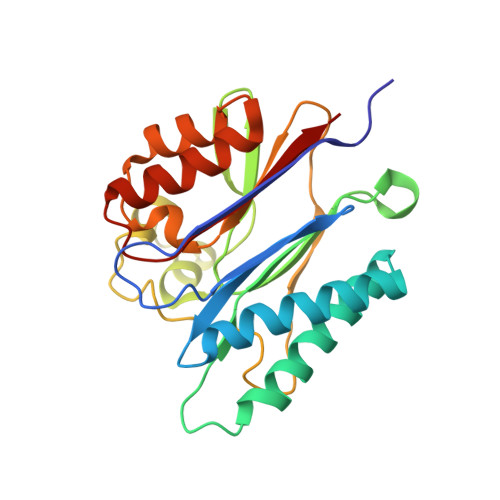Insights Into the Mechanism of Ppm Ser/Thr Phosphatases from the Atomic Resolution Structures of a Mycobacterial Enzyme
Bellinzoni, M., Wehenkel, A., Shepard, W., Alzari, P.M.(2007) Structure 15: 863
- PubMed: 17637345
- DOI: https://doi.org/10.1016/j.str.2007.06.002
- Primary Citation of Related Structures:
2JFR, 2JFS, 2JFT - PubMed Abstract:
Serine/threonine-specific phosphatases (PPs) represent, after protein tyrosine phosphatases, the second major class of enzymes that catalyze the dephosphorylation of proteins. They are classed in two large families, known as PPP and PPM, on the basis of sequence similarities, metal ion dependence, and inhibitor sensitivity. Despite their wide species distribution and broad physiological roles, the catalytic mechanism of PPM phosphatases has been primarily inferred from studies of a single enzyme, human PP2Calpha. Here, we report the biochemical characterization and the atomic resolution structures of a soluble PPM phosphatase from the saprophyte Mycobacterium smegmatis in complex with different ligands. The structures provide putative snapshots along the catalytic cycle, which support an associative reaction mechanism that differs in some important aspects from the currently accepted model and reinforces the hypothesis of convergent evolution in PPs.
Organizational Affiliation:
Unité de Biochimie Structurale, CNRS-URA 2185, Institut Pasteur, 75724 Paris Cedex 15, France.


















